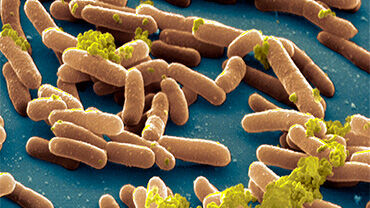Zoonotic diseases: progress has stalled
There were only minor fluctuations in reported cases of three main zoonotic diseases in the European Union (EU) last year compared with 2016. The number of reported cases of salmonellosis and campylobacteriosis has remained stable over the past five years, although listeriosis continues to rise. These are the main findings of the annual report on trends and sources of zoonoses published today by the European Centre for Disease Prevention and Control (ECDC) and the European Food Safety Authority (EFSA).
After several years of decline, salmonellosis cases in the EU have flattened out. In 2017 the number fell slightly from 94 425 to 91 662, but the downward trend that began in 2008 has stalled in recent years.
“After years of significant progress in reducing the burden of food-borne illnesses in the EU, especially Salmonella, the situation has now stalled. Increased efforts are needed to push the figures further down”, said EFSA’s Chief Scientist Marta Hugas.
Salmonella Enteritidis is the most commonly reported type of Salmonella in humans, causing one in seven food-borne outbreaks. In the period 2013–2017, the trend of confirmed cases of S. Enteritidis in humans was stable and seemed to mirror an analogous trend in laying hens.
The 5 079 food- and waterborne outbreaks reported in 2017 represent a 6.8% decrease compared with 2016. Salmonella bacteria were the most common cause of food-borne outbreaks, particularly in meat products and eggs, which caused the highest number of outbreak cases.
“The fall in the number of outbreaks is to be welcomed, but we still saw an average of 100 food- and waterborne outbreaks per week in 2017, some of which affected several countries”, said Mike Catchpole, ECDC’s Chief Scientist. “These infections are a substantial cause of human illness in the EU. The rising trend of listeriosis, which continues to cause deaths in vulnerable groups, needs to be reversed”.
Campylobacter and Listeria
Cases of campylobacteriosis decreased slightly in 2017 compared with 2016 (246 158 from 246 917), but it is still the most commonly reported zoonotic disease in the EU. The highest occurrences were detected in chicken meat (37.4%) and turkey meat (31.5%).
Cases of listeriosis decreased slightly in 2017: 2 480 infections were reported, against 2 509 in 2016. However, the trend has been upward over the past five years. The group most affected by the disease in 2017 was the elderly, particularly those over 84. In this age group, the listeriosis fatality rate was 24%, while overall in the EU, the infection was fatal for one in every 10 patients. The highest levels of Listeria monocytogenes were detected in fish and fishery products (6%), followed by ready-to-eat salads (4.2%).
The report further summarises trends and sources for tuberculosis due to Mycobacterium bovis, Brucella, Shiga toxin-producing Escherichia coli, Yersinia, Trichinella, Echinococcus, congenital Toxoplasmosis, rabies, Coxiella burnetii (Q fever), West Nile virus and tularaemia.
Surveillance report
The European Union summary report on trends and sources of zoonoses, zoonotic agents and food-borne outbreaks in 2017
Cases of salmonellosis and campylobacteriosis have remained stable over the past five years, although listeriosis is on the rise. In 2017, there was an average of 100 food- and waterborne outbreaks per week.







